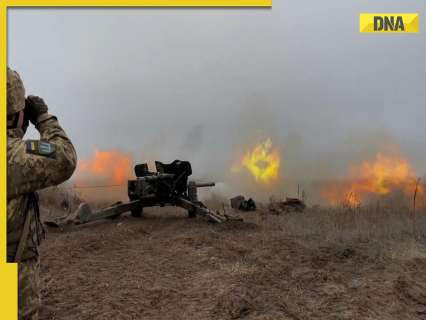
It was revealed this week a beluga whale that died in August this year was being trained by Russia to be a spy. Hvaldimir became internationally famous in 2019 after being spotted wearing a harness that appeared to be designed to carry a camera. Fishermen in northern Norway noticed Hvaldimir in April 2019.
The whale's nickname is a combination of the Norwegian word hval (whale) and the first name of Russian president Vladimir Putin. It was obvious to the fishermen that the whale was very used to humans as he would interact with them and take fish from them. The harness Hvaldimir wore was labelled "Equipment of St Petersburg".
This led to speculation that the whale may have been trained by the Russian military as a spy. A Russian marine scientist believes that Hvaldimir was being trained to guard a Russian military naval base in the Arctic Circle, but escaped because it was a "hooligan". Animals have been used in warfare for centuries.
Horses, elephants, and dogs are some of the most well-known examples. Horses revolutionized mobility on the battlefield, while elephants were used as living tanks in ancient battles. Dogs have served as messengers, sentries, and even combatants.
Marine animals have also been considered for espionage and military purposes. The US Navy's Marine Mammal Program, which began in the 1960s, trained dolphins and sea lions for various tasks, including mine detection, equipment recovery, and harbour defence. Dolphins, with their sophisticated sonar capabilities, were particularly useful for detecting underwater mines.
Sea lions, on the other hand, were trained to retrieve objects from the ocean floor and to attach recovery lines to equipment. Spy agencies have long been interested in the potential of using animals for intelligence purposes. One of the most famous examples is the CIA's "Acoustic Kitty" project.
In the 1960s, the CIA attempted to use cats to spy on the Soviet Union. The idea was to implant listening devices inside cats and train them to eavesdrop on conversations. The project involved surgically implanting a microphone in a cat's ear canal, a radio transmitter at the base of its skull, and a thin wire into its fur.
Despite the significant investment, the project was ultimately deemed a failure. The first test cat was reportedly hit by a taxi, and the project was abandoned due to the difficulty of training cats to follow specific instructions. Pigeons have been used as messengers for centuries, particularly during World War I and World War II.
Their ability to fly long distances and return to their home lofts made them invaluable for carrying messages across enemy lines. The British even established the National Pigeon Service, which used pigeons to carry messages during World War II. One famous pigeon, named Cher Ami, was awarded the French Croix de Guerre for delivering a crucial message that saved nearly 200 soldiers.
One of the more unusual proposals was the use of bats as bombers during World War II. The idea, conceived by a dentist named Lytle S Adams, involved attaching small incendiary devices to bats and releasing them over Japanese cities. The bats would roost in buildings, and the timed incendiaries would ignite, causing widespread fires.
The project, known as "Project X-Ray," was tested but ultimately abandoned in favour of the atomic bomb. During World War II, the Soviet Union trained dogs to carry explosives and run under enemy tanks. The dogs were trained to associate food with tanks, and the explosives were designed to detonate upon contact.
Unfortunately, the project had limited success, as the dogs often returned to their handlers or were frightened by the noise of battle. The British Special Operations Executive (SOE) devised a plan to use dead rats filled with explosives to sabotage German factories during World War II. The idea was that the rats would be placed in coal piles, and when the coal was shovelled into boilers, the rats would explode, causing damage and disruption.
The plan was never fully implemented, but it remains one of the more bizarre ideas in the history of warfare. Researchers have explored the use of bees and wasps for detecting explosives and chemical weapons. These insects have a keen sense of smell and can be trained to associate specific scents with food rewards.
While the idea is still in the experimental stage , it holds promise for non-invasive detection methods. The use of animals in warfare raises significant ethical questions. Animal rights activists argue that it is cruel and inhumane to use animals for military purposes, particularly when it involves putting them in harm's way.
The debate continues as military and scientific communities weigh the benefits against the ethical implications..














